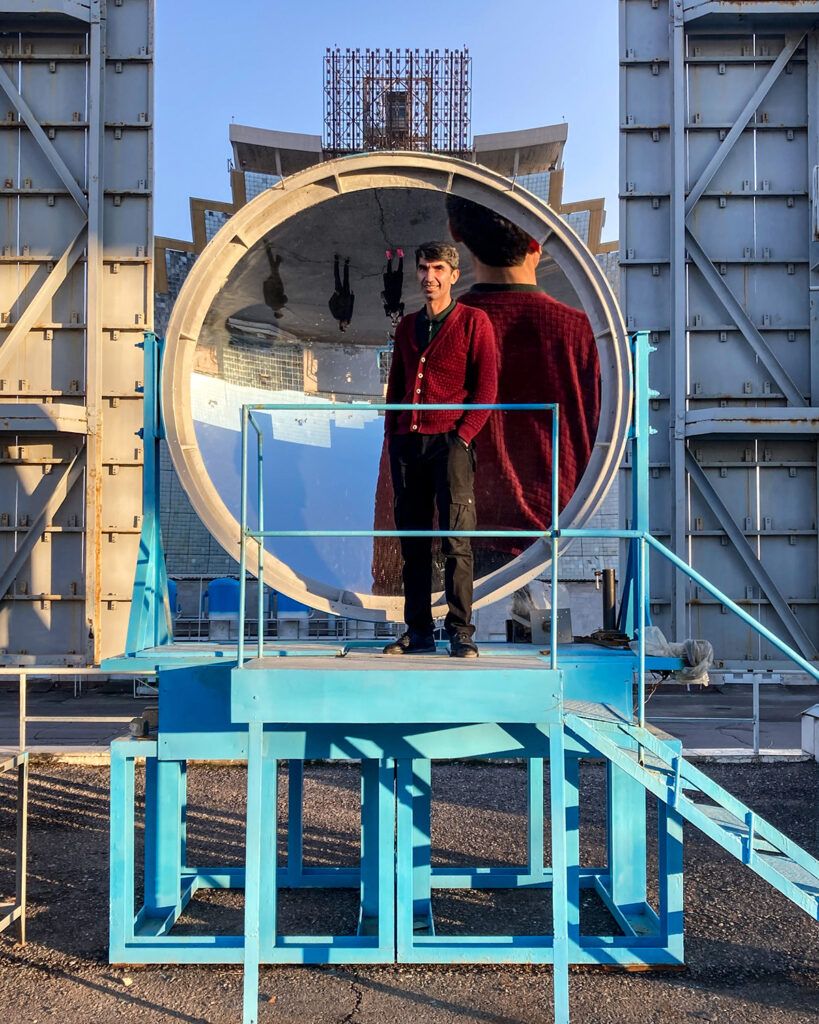The Soviet-era solar furnace near Tashkent, Uzbekistan
If you were scanning satellite images for possible locations of Bond villain lairs, the Parkent Solar Furnace near Tashkent in Uzbekistan, twinkling like a diamond on the map, would likely catch your eye.
Built on a mountain 50 km east of the capital, on top of bedrock which protects it from earthquake tremors, this site was top secret and closely guarded until 2009. It is now owned by Uzbekistan’s Academy of Science, and technology-loving tourists can take a guided tour.
There are only two solar furnaces of this kind in the world. There is one in France, built in 1969; and this one, constructed by the Soviets in what was then the Uzbek SSR 1981.
A solar furnace is a parabolic reflector: more than 10,000 mirror panels arranged in rows on the hillside rotate in unison, and they refract the sunlight onto a 54 m high concentrator, the actual furnace.
It is the same idea as focusing rays of sunshine through a magnifying glass and using it to set light to something, only on a much, much bigger scale.
The Parkent Solar Furnace reaches its highest temperature of 3,000 Celsius on bright winter days.
At first, that sounds counterintuitive, as it is in summer when the weather is hottest and the sun feels at its most intense, but it is in winter when there are fewest dust and moisture particles in the air.
This temperature is hot enough to melt steel, iron, and titanium, and as it is solar-powered, the process is environmentally friendly and the energy generated is free!




Originally, the Soviet scientists used this furnace to create weapons for the military and critical parts for the aerospace industry
Today the facility is used for civilian research and specialist industrial orders. The 160 employees — a fraction of the Soviet-era workforce of 1,500 staff — power up the furnace around 100 times a year.
Touring the Parkent Solar Furnace you can examine the heliostats (mirror panels) up close.
Put your best outfit on and smile: you’ll be looking at yourself in 10,000 mirrors!
A kettle hanging on one of the smaller panels demonstrates how quickly the panels generate heat. Anyone for a cup of tea?
And then there’s the administrative building, off to one side of the concentrator. Here, slightly dusty and surrounded by a very Soviet interior design scheme, are exhibitions explaining how the solar furnace works and the kind of experiments it enables scientists to do.
The solar furnace is a remarkable looking structure, and a very simple but smart way to generate extreme heat for cutting edge research.
Main image: The Parkent Solar Panel (Sophie Ibbotson)





